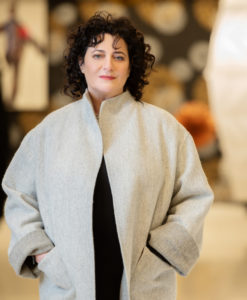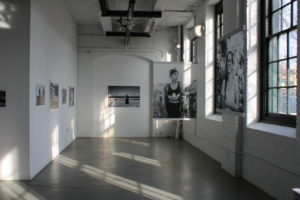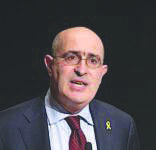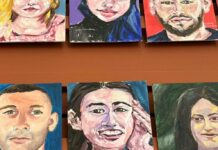
When Rachel Zimmerman moved to Philadelphia from New York City in the late 1990s, she was a young photographer looking to connect with other artists.
So Zimmerman created a website, InLiquid, where artists could share work, view the creations of contemporaries and learn about upcoming shows. In the early days of mass internet use, the site gained a following and active membership from people in similar situations as Zimmerman.
More than 20 years later, Zimmerman is still a photographer, and InLiquid is still a website. But both are also so much more.
The Old City resident is known in the local arts community as a passionate advocate for and connector of other artists, from photographers to painters to sculptors. And InLiquid is a nonprofit organization with a physical space for galleries, the Crane Arts Building on North American Street, an annual schedule of events around the city and a much more modern, sophisticated website for this digital age.
InLiquid counts about 300 members in its regular base, according to Zimmerman.
“We just kept growing,” she said. “It grew by word of mouth.”
Zimmerman grew up in a Jewish household in Philadelphia. But she left for New York to earn her BFA in photography at New York University’s famous Tisch School of the Arts.
After school, she did medical photography to pay her bills but grew tired of the competitive art gallery scene. So in the late ’90s, she returned home and started a print and web design business. The photographer hired graphic designers to do the design part and started meeting other artistic people from around the city.
But she also realized that these artists — as well as the countless others she hadn’t met yet — weren’t really connected. They would play the expensive game of sending slides into galleries and hoping for the best.
That was the scene.
Then Zimmerman had a realization.
“Now that we had computers, we could do all these different things,” she said. “We needed a website to support artists.”
She created InLiquid and began posting art, show listings, artist talks and openings. Zimmerman and others could add to the site at any time, making it different from the primary art information sources of the era, The Philadelphia Inquirer and a now-defunct publication called Art Matters.
Zimmerman named the site InLiquid because as an artist, you’re either “moving or drowning,” she said. The site took on a similar energy.
“I was like, ‘Give me your work. We’re gonna put it on this website,’” she recalled.
And she did, and it worked.
Showcasing everyone from emerging to experienced artists, InLiquid started driving “different types of traffic,” Zimmerman said. After the site proved itself, its creator and contributors opened a membership group. They thought it would encourage an even deeper and more consistent level of commitment, and they were right.
By the site’s first anniversary in 2000, it was big enough for members to plan a silent art auction — in the physical space.
From that point, the InLiquid community hosted public events on an annual basis. Now, Zimmerman and friends do eight per year.

But the executive director’s favorite seems to be the one she mentions most often: the annual “Art for the Cash Poor” exhibit, which is really more like a street party where artists sell work for under $200, and attendees enjoy food and music.
“I was always driven to do stuff like that,” Zimmerman said.
As far back as high school, the photographer dreamed of more than just doing her art. One time, she organized a group of friends to drive to the Pennsylvania State Capitol in Harrisburg to lobby for equal rights.
“Being Jewish, it’s always about community. That was how I was raised,” she said. “You support the community around you.”
She was quick to credit her community for building InLiquid.
It’s been her staff, the artists and the collaborations, Zimmerman said.
“You can’t do it alone,” she concluded.
Moving forward, Zimmerman wants to help expand Philadelphia’s artistic community beyond Old City. Philadelphia does not have a big gallery scene because of its proximity to New York, she said.
But it could.
Zimmerman thinks it should take the form of a more public-facing scene where you can both see and buy art.
“You don’t have to go to New York,” she said. “I’d like to think we’re part of making that happen.” JE
[email protected]; 215-832-0740






